April 13, 2025
In this edition:
* Fram2Ham Mission A Success
* ISS SSTV April 11-16 – Humans in Space
* OpenGD77 Handheld Radio Firmware Aids FM Satellite Operating
* Update about HADES-ICM
* A New Breed of Satellite and Space Focused “Makers” is Emerging
* Your Story Is Needed
* Changes to AMSAT-NA TLE Distribution
* Starliner’s Wild Ride
* ARISS News
* Upcoming Satellite Operations
* AMSAT Ambassador Activities
* Satellite Shorts From All Over
The AMSAT News Service bulletins are a free, weekly news and information service of AMSAT, the Radio Amateur Satellite Corporation. ANS publishes news related to Amateur Radio in Space including reports on the activities of a worldwide group of Amateur Radio operators who share an active interest in designing, building, launching and communicating through analog and digital Amateur Radio satellites.
The news feed on http://www.amsat.org publishes news of Amateur Radio in Space as soon as our volunteers can post it.
Please send any amateur satellite news or reports to: ans-editor [at] amsat.org
Sign up for free e-mail delivery of the AMSAT News Service Bulletins via the ANS List; to join this list see: https://mailman.amsat.org/postorius/lists/ans.amsat.org/
Fram2Ham Mission A Success
According to our education partner ARISS, “The Framonauts are back on Earth after a ground breaking mission and ham radio event!” The ARISS STEM contest teams submission deadline for participants to submit their contest entries was April 17, 2025. More than 110 STEM team submissions were received, along with 1,100 general submissions to the gallery.
Once contest submissions are complete, ARISS will share when the gallery images are live. That is then your opportunity to start sharing your personal image SSTV captures on social media.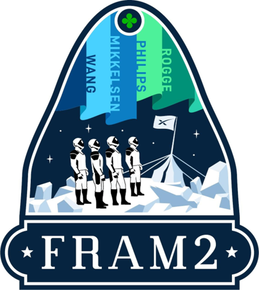
As with any experiment, there are many lessons learned. ARISS seeks feedback from participants.
A Shortwave Listener (SWL), Ryszard Kowalski, on April 7, 2025 posted a professional-quality framed collection of photos received during the Fram2Ham SSTV Experiment. For details see: https://fram2ham.com/. Kowalski has been a member of AMSAT since January 21, 2020.
The photos, captured during April 1-4, 2025, were posted on the AMSAT Facebook Group. View the collection here: https://www.facebook.com/photo/?fbid=1738703997045169&set=gm.2587259684795960&idorvanity=752128438309103. A Facebook account may be necessary to view the images.
In another attention-worthy AMSAT Facebook Group post, Matúš Nemec, OM25ISS Administrator, on April 6, 2025 posted a set of photos and information regarding a Day in Space event at the University of Prešov, in Slovakia. See https://www.facebook.com/groups/1167612127668053/user/100034118948580/. A video of the day-long STEM oriented activity can be viewed here: https://www.youtube.com/live/M3TRp9ykIQo?feature=shared.
[ANS thanks ARIS and David Vine, WA1EAW, for the above information]
The 2025 AMSAT President’s Club Coins Have Just Arrived!
Celebrating the 40th Anniversary of Amateur Radio on Human Spaceflight
Help Support GOLF and Fox Plus.
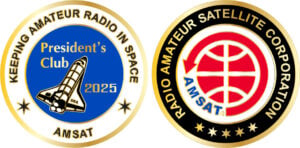
Join the AMSAT President’s Club today and help
Keep Amateur Radio in Space!
https://www.amsat.org/join-the-amsat-presidents-club/
ISS SSTV April 11-16 – Humans in Space
April 12 is the International Day of Human Spaceflight so, what better theme for the April 11-16 Slow Scan TV transmissions.
Start: Friday, April 11 1700 GMT
End: Wed, April 16 1430 GMT
Frequency: 145.800 MHz FM (+/-3.5 kHz Doppler Shift)
SSTV Mode: PD120 (Transmission cycle 2 minutes on, 2 minutes off)
Amateurs are invited to upload decoded images in the ARISS gallery, area “Series 26 – Humans in space” at: https://ariss-usa.org/ARISS_SSTV/
Once submitted, clicking on the dedicated button enables application for the official ARISS SSTV award.
The ARISS QSL can also be requested by contacting the European QSL bureau: https://www.ariss-eu.org/index.php/ariss-station/european-qsl-bureau
To support everyone interested in such events, the European Space Agency released tutorials about how to receive pictures transmitted over amateur radio by the International Space Station: you can find them on https://issfanclub.eu/2024/11/08/esa-tips-how-to-get-pictures-from-the-international-space-station-via-amateur-radio-2/
It’s always possible to receive the ISS SSTV signal by using the WebSDR at the Goonhilly Earth Station, the audio can then be fed into your PC or Smartphone SSTV App https://vhf-goonhilly.batc.org.uk/
Follow @ARISS_intl on X for official updates, since changes can occur.
Reminder, the images are sent on a (roughly) 2 minutes on, 2 minutes off schedule. So if nothing is heard, give it 2 minutes!
Many FM rigs can be switched been wide and narrow deviation FM filters. For best results you should select the filter for wider deviation FM. Handhelds generally have a single wide filter fitted as standard.
Predictions for the ISS pass times are available at https://www.amsat.org/track/
Useful information on receiving the pictures and links for Apps to display the pictures can be found here: https://amsat-uk.org/beginners/iss-sstv/
[ANS thanks AMSAT-UK for the above information]
OpenGD77 Handheld Radio Firmware Aids FM Satellite Operating
An article In ARRL QST magazine, April 2025, pages 35 and 36, provides an overview of an available open source firmware for held-held radios: According to the article, the free firmware can provide some models of analog FM and DMR capable radios with satellite capability including screens showing; polar view graphic, satellite individual predictions, a satellite alarm and the ability to upload Kep’s data into the radio.
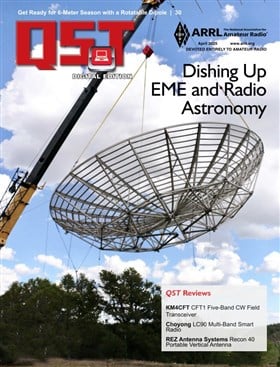
Doppler tuning and AOS and LOS information were mentioned in the QST article. View the April 2025 QST issue via this link: https://edition.pagesuite.com/get_image.aspx?w=280&eid=7584fe3f-aae2-4504-82c2-65a4c4f268bf&pnum=first.
ARRL members can access QST supplementary materials which are available via this link: http://www.arrl.org/qst-in-depth. Several YouTube videos about the firmware are live including how to create a code plug for programming a handheld with GD-77 firmware. This unique firmware was introduced several years ago.
The GD77 firmware also includes a number enhancements, including easier DMR related functions. Recent discussion on OpenGD77 was heard via the CSRA Multimode Tech Net from several satisfied users. Information about the net is available on their Facebook Group page: https://www.facebook.com/groups/1138357396634299/
The firmware is now available for use in some models of Radioddity, Baofeng and TYT model radios and have been successfully used on an Anytone 878UV II plus handheld.. A GD77 user guide is available via this link: https://github.com/LibreDMR/OpenGD77_UserGuide?tab=readme-ov-file#readme
and a forum is here: https://www.opengd77.com/
The developer’s site includes this caution statement, “firmware license forbids any form of commercial use of the firmware binary or the source code. Installing the firmware onto the radio will invalidate all FCC certifications and those of other countries’ licensing bodies. However, it is usually possible to back up and restore the original radio firmware.
[ANS thanks QST and David Vine, WA1EAW, for the above information]
Need new satellite antennas?
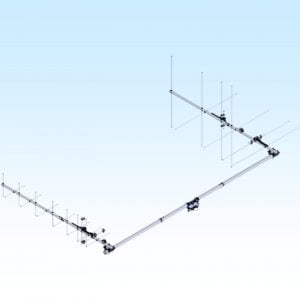
Purchase M2 LEO-Packs from the AMSAT Store.
When you purchase through AMSAT, a portion of the proceeds goes towards
Keeping Amateur Radio in Space.
https://amsat.org/product-category/hardware/
Update About HADES-ICM
HADES-ICM was deployed last Monday, March 31, at 7:37 UTC from OTV ION-SCV-017. Telemetry data shows the satellite is in good condition. The satellite has already accepted commands and now it is undergoing a testing phase. The final TLE is not yet available but you can use this one (Source SatNOGS):
HADES-ICM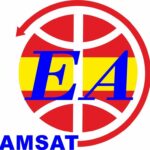
1 98637U 25052X 25092.34373891 .00000000 00000-0 42496-2 0 03
2 98637 97.4434 347.3229 0004588 342.2991 86.6061 15.18376415 09
The repeater will not be active until we have its final TLE and the satellite has been fully checked. This can take several weeks.
The same software as for HADES-R can be used for demodulating and decoding. (Recommended Andy’s Soundmodem).
[ANS thanks Félix Paez, EA4GQS, AMSAT-EA Principal Project Manager, for the above information]
A New Breed of Satellite and Space Focused “Makers” is Emerging
Several threads have come together pointing to a new breed of space oriented individuals who may be attracted to Amateur Radio. Exploding interest in inexpensive small board computers (SBC), satellite specific firmware for handhelds, 3-D printed parts for satellite antennas and soda can size “satellites,” and makers using small board computers.
According to Wikipedia, “maker culture is a contemporary subculture representing a technology-based extension of DIY culture that intersects with hardware-oriented parts of hacker culture and revels in the creation of new devices as well as tinkering with existing ones.” https://en.wikipedia.org/wiki/Maker_culture
Taken as a whole, this points in the direction from which new hams, especially students and young adults, may arise. This article is the first of a series about makers as potential recruits for Amateur Radio clubs. To learn more about makers, simply go to YouTube. YouTube is an abundant source of maker videos with some produced by satellite oriented Radio Amateurs and others.
You may recall that the 3-D printed components and Raspberry Pi (RPi) SBCs have been key components of many recent AMSAT projects. RPi. Is often the SBC of choice, especially in severely volume-restricted cubesats.
For example, the AMSAT CubeSatSim v1.3 hardware including two RPi SBCs and four matching cameras. An excellent overview of AMSAT education with the CubeSat Simulator project sessions were presented by Alan Johnston, KU2Y, the CubeSatSim creator. Another session, Integration of the AMSAT CubeSat Simulator for Education and Research, was presented by Rachel Jones, KO4HLC.
Learn more about the CubeSatSim here: https://cubesatsim.com/. Also, members may download any of the 1986 to 2024 AMSAT Symposium Proceedings here: https://launch.amsat.org/Proceedings. Non-members who join AMSAT may download the 184 page Proceedings and utilize all other AMSAT information and member services: https://launch.amsat.org/Membership.
To attract young adults Amateur Radio clubs may want to consider acquiring 3-D printers for shared use in member projects. Also, widely publicized activities using SBCs and open source software can attract fresh participants to clubs.
We’ll be covering more topics about makers and means of attracting them to Amateur Radio clubs in following issues the AMSAT News Weekly Bulletin.
[ANS thanks David Vine, WA1EAW, for the above information]
Your Story Is Needed
The AMSAT News Service weekly Bulletins and the bi-monthly AMSAT Journal editors are always seeking fresh Amateur Satellite news and information. We need your input including news tips. Send them to: [email protected].
AMSAT volunteer editors sometimes lack important news about domestic and international Amateur Satellite events and activities, club presentations, Amateur Satellite related projects, etc. Send info or an article about it to the above address.
 Have you taken part in or conducted an interesting Amateur Satellite oriented activity. Do you present talks and presentations about Amateur Satellites and closely related topics? Do you participate in Amateur Satellite oriented nets? Would you like others to know about it? If so, tell us about it via: [email protected].
Have you taken part in or conducted an interesting Amateur Satellite oriented activity. Do you present talks and presentations about Amateur Satellites and closely related topics? Do you participate in Amateur Satellite oriented nets? Would you like others to know about it? If so, tell us about it via: [email protected].
Are you experienced as a writer, presenter or have other space or satellite related skills you’d like to share with AMSAT members and others worldwide? If so, reach out to us via the email address above and let us know what you’d like to write about.
There are no paid staff personnel employed by AMSAT publications. The organization relies on volunteers and financial donations from people worldwide who support AMSAT in many different ways. If you are reading this note you are interested in keeping Amateur Radio in space and space-oriented education for students, young people as well as adults.
Thank you for reading this note and we hope to hear from you soon.
AMSAT Remove Before Flight Key Tags Now Available
Yes, These are the Real Thing!
Your $20 Donation Goes to Help Fly a Fox-Plus Satellite
Includes First Class Postage (Sorry – U.S. Addresses Only)
Order Today at https://www.amsat.org/product/amsat-remove-before-flight-keychain
Changes to AMSAT-NA TLE Distribution
Two Line Elements or TLEs, often referred to as Keplerian elements or keps in the amateur community, are the inputs to the SGP4 standard mathematical model of spacecraft orbits used by most amateur tracking programs. Weekly updates are completely adequate for most amateur satellites. TLE bulletin files are updated daily in the first hour of the UTC day. New bulletin files will be posted immediately after reliable elements become available for new amateur satellites. More information may be found at https://www.amsat.org/keplerian-elements-resources/.
The following satellites have been removed from this week’s AMSAT TLE distribution:
DRAGON Fram2 NORAD Cat ID 63427 Splashdown 16:19 04 April 2025
Fram2Ham Provisional Cat ID 90000 Experiment terminated 08:42:50 O4 April 2025
The following satellites have been added to this week’s AMSAT TLE distribution:
TEVEL2-1 NORAD Cat ID 63217
TEVEL2-2 NORAD Cat ID 63218
TEVEL2-3 NORAD Cat ID 63219
TEVEL2-4 NORAD Cat ID 63213
TEVEL2-5 NORAD Cat ID 63214
TEVEL2-6 NORAD Cat ID 63215
TEVEL2-7 NORAD Cat ID 63239
TEVEL2-8 NORAD Cat ID 63237
TEVEL2-9 NORAD Cat ID 63238
Please note that Two/Three Line Element (TLE or 3LE) sets for spacecraft launched in the near future will not be available, and new formats will be used instead. The essence of the problem is that the US Space Force is running out of numbers to catalog new satellites, see https://celestrak.org/NORAD/documentation/gp-data-formats.php for details. AMSAT will continue to disseminate TLE for satellites currently in orbit indefinitely as we do now, but we seek comments regarding the best way to support the amateur satellites of the future. For example, is there any need to augment the weekly e-mail with a new list in one or more of the new formats or is on line access via www.celestrak.org or www.amsat.org sufficient? Please send your comments using the form at https://www.amsat.org/webmaster-contact/ on the AMSAT web site.
[ANS thanks Joe Fitzgerald, KM1P, AMSAT Orbital Elements Manager for the above information]
Starliner’s Wild Ride
For the first time since they returned to Earth on a Crew Dragon vehicle several weeks ago, NASA astronauts Butch Wilmore and Sunita Williams, KD5PLB, participated in a news conference on Monday, March 31, at Johnson Space Center in Houston. Afterward, they spent hours conducting short, 10-minute interviews with reporters from around the world, describing their mission to test Boeing’s Starliner spacecraft on the vehicle’s first crewed, which launched on June 5, 2024 for a planned 10 days.
After Starliner separated from the Atlas V rocket, Williams and Wilmore performed several maneuvering tests and put the vehicle through its paces. Starliner performed exceptionally well during these initial tests on day one.
More so even than launch or landing, the most challenging part of this mission, which would stress Starliner’s handling capabilities as well as its navigation system, would come as it approached the orbiting laboratory. That’s when trouble started, as several thrusters began to fail. Wilmore had to take manual control of the vehicle, but even more thruster failures ensued.
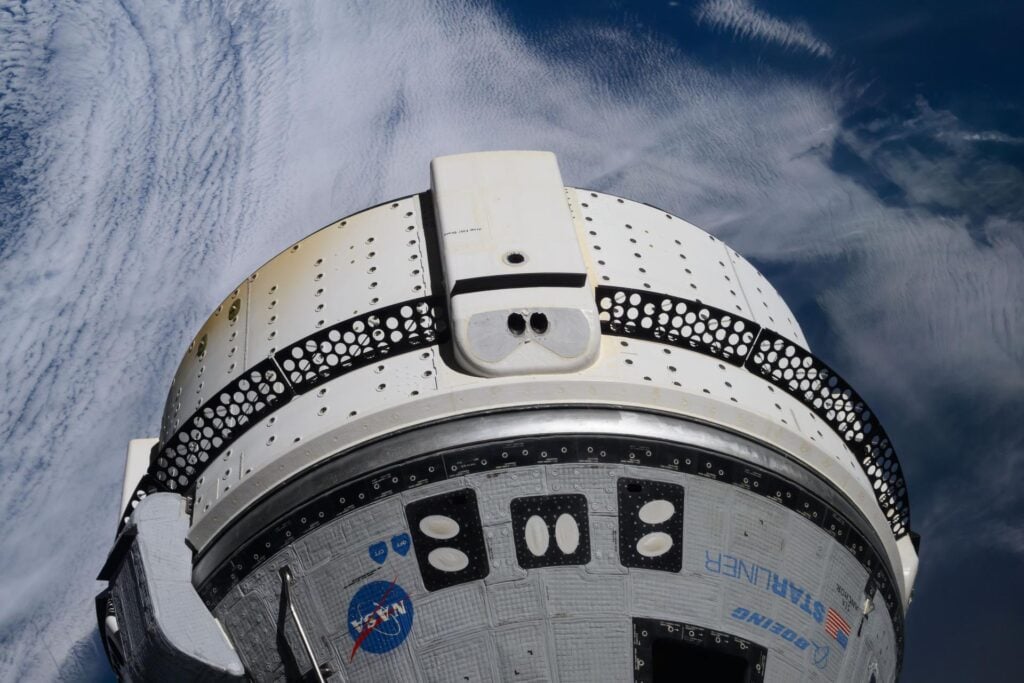
Boeing’s Starliner spacecraft is pictured docked to the International Space Station. One of the four thruster packs is visible on the service module. Credit: NASA
Essentially, Wilmore could not fully control Starliner any longer. But simply abandoning the docking attempt was not a palatable solution. Just as the thrusters were needed to control the vehicle during the docking process, they were also necessary to position Starliner for its deorbit burn and reentry to Earth’s atmosphere. So Wilmore had to contemplate whether it was riskier to approach the space station or try to fly back to Earth. Williams was worrying about the same thing.
Wilmore said, “We knew that they [Mission Control] were working really hard to be able to keep communication with us, and then be able to send commands. We were both thinking, what if we lose communication with the ground?
“Thankfully, these folks are heroes. And please print this. What do heroes look like? Well, heroes put their tank on and they run into a fiery building and pull people out of it. That’s a hero. Heroes also sit in their cubicle for decades studying their systems, and knowing their systems front and back. And when there is no time to assess a situation and go and talk to people and ask, ‘What do you think?’ they know their system so well they come up with a plan on the fly. That is a hero. And there are several of them in Mission Control.”
For the full article, see http://bit.ly/3XX0cnA
[ANS thanks Eric Berger writing for Ars Technica for the above information]
ARISS NEWS
Amateurs and others around the world may listen in on contacts between amateurs operating in schools and allowing students to interact with astronauts and cosmonauts aboard the International Space Station. The downlink frequency on which to listen is 145.800 MHz worldwide.![]()
Magnet Innovation Center, Inlet Beach, Florida, telebridge via AB1OC
The scheduled crewmember is Nichole Ayers, KJ5GWI
The ARISS mentor is AA4KN
Contact is go for: Thu 2025-04-17 15:52:03 UTC 56 deg
Pan-African Citizen Science e-lab, Africa, telebridge via IK1SLD
The scheduled crewmember is Nichole Ayers, KJ5GWI
The ARISS mentor is IN3GHZ
Contact is go for: Fri 2025-04-18 10:26:16 UTC 76 deg
The crossband repeater continues to be ACTIVE (145.990 MHz up {PL 67} & 437.800 MHz down). If any crewmember is so inclined, all they have to do is pick up the microphone, raise the volume up, and talk on the crossband repeater. So give a listen, you just never know.
The packet system is also ACTIVE (145.825 MHz up & down).
As always, if there is an EVA, a docking, or an undocking; the ARISS radios are turned off as part of the safety protocol. UPCOMING: Powering off for Soyuz undocking on Apr 19 OFF about 12:15 UTC. ON Apr 20 about 14:30 UTC.
Note, all times are approximate. It is recommended that you do your own orbital prediction or start listening about 10 minutes before the listed time.
The latest information on the operation mode can be found at https://www.ariss.org/current-status-of-iss-stations.html
The latest list of frequencies in use can be found at https://www.ariss.org/contact-the-iss.html
[ANS thanks Charlie Sufana, AJ9N, one of the ARISS operation team mentors for the above information]
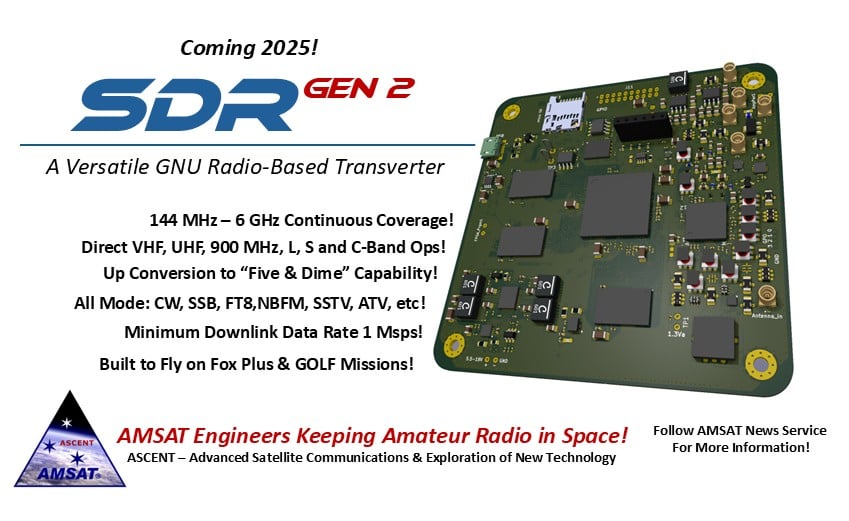
Upcoming Satellite Operations
April 30: VYØSAT on SO-50 from EP28. Tentative if flight/wx cooperates. POTA CA4585.
A growing number of satellite rovers are currently engaged in sharing their grid square activations on https://hams.at. By visiting the website, you gain easy access to comprehensive information about the operators responsible for activating specific grid squares. Additionally, you have the ability to assess the match score between yourself and a particular rover for a given pass, while also being able to identify the upcoming satellite passes that are accessible from your location.
[ANS thanks Ian Parsons, K5ZM, AMSAT rover page manager, for the above information]
AMSAT Ambassador Activities
AMSAT Ambassadors provide presentations, demonstrate communicating through amateur satellites, and host information tables at club meetings, hamfests, conventions, maker faires, and other events.
Denton County Amateur Radio Association (DCARA) – Monday, April 28 at 7 p.m. CDT
Denton Count Administrative Courthouse
1 Courthouse Drive
3rd floor, Room 2020
Denton, TX 76208
Also online. See https://dcara.net/club-calendar/ for link
AMSAT Ambassador Tom Schuessler, N5HYP
Dayton Hamvention – May 16th thru 18th, 2025
Greene County Fair and Expo Center
210 Fairground Road
Xenia, OH 45385
https://hamvention.org/
[ANS thanks Bo Lowrey, W4FCL, Director – AMSAT Ambassador Program, for the above information]
Satellite Shorts From All Over
+The Cover Story for the May 2025 issue of QST magazine is an article (beginning on page 55) about “NASA on the Air” (NOTA), a collaboration among 12 amateur radio clubs at NASA facilities across the country, from California to Florida. Club stations, operated primarily by NASA staff member who happen to be licensed amateurs, commemorate special events in space history with special operations on the ham bands. See the QST article or https://nasaontheair.wordpress.com/ for more information. (ANS thanks QST magazine for the above information.)
+ Three new crew members arrived at the International Space Station on April 8, 2025, beginning an eight-month space research mission. NASA astronaut Jonny Kim and Roscosmos cosmonauts Sergey Ryzhikov and Alexey Zubrisky launched earlier the same day aboard the Soyuz MS-25. (ANS thanks NASA for the above information.)
+ CatSat now ready for microwave testing and QSOs. CatSat successfully demonstrated the capability to act as a linear transponder satellite for the first time on the morning of April 11! In this mode of operation, the satellite receives signals sent from the ground at 5.663 GHz and re-transmits them back to the ground at 10.47 GHz. During the pass, team members tracked the satellite and confirmed the presence of the re-transmitted signal at 10.47 GHz. (ANS thanks Walter Rahmer, KK7IOV, CatSat Command System Lead, for the above information.)
+ The Indonesian APRS satellite IO-86 has been returned to service after a hiatus of several days during the Eid al-Fitr holiday. The operating schedule may be found on X @pr_teksat. (ANS thanks Yono Adisoemarta, YDØNXX, for the above information.)
+ The Yuri Gagarin Cup International HF and VHF Contest, held in memory of Konstantin Khachaturov, RT3A (SK), is held April, 12 2025, 12.00 UTC until April, 13 2025, 11.59 UTC on HF and satellites. Awards are offered in various categories, including for SWLs. For details, see https://gccontest.ru/en/rules-gc-2025/ (ANS thanks Ham Radio World for the above information.)
+ SpaceX static fired Super Heavy Booster 14 (that had previously flown and returned on Flight 7) ahead of Starship Flight 9 with 29 of its 33 engines being flight proven—this will be the first reuse for the Starship system. (ANS thanks The Orbital Index for the above information.)
Join AMSAT today at https://launch.amsat.org/
In addition to regular membership, AMSAT offers membership to:
* Societies (a recognized group, clubs or organization).
* Primary and secondary school students are eligible for membership at one-half the standard yearly rate.
* Post-secondary school students enrolled in at least half time status shall be eligible for the student rate for a maximum of 6 post-secondary years in this status.
* Memberships are available for annual and lifetime terms.
Contact info [at] amsat.org for additional membership information.
73 and remember to help Keep Amateur Radio in Space!
This week’s ANS Editors, Mark Johns, KØJM and David Vine, WA1EAW
mjohns [at] amsat.org
ANS is a service of AMSAT, the Radio Amateur Satellite Corporation, 712 H Street NE, Suite 1653, Washington, DC 20002
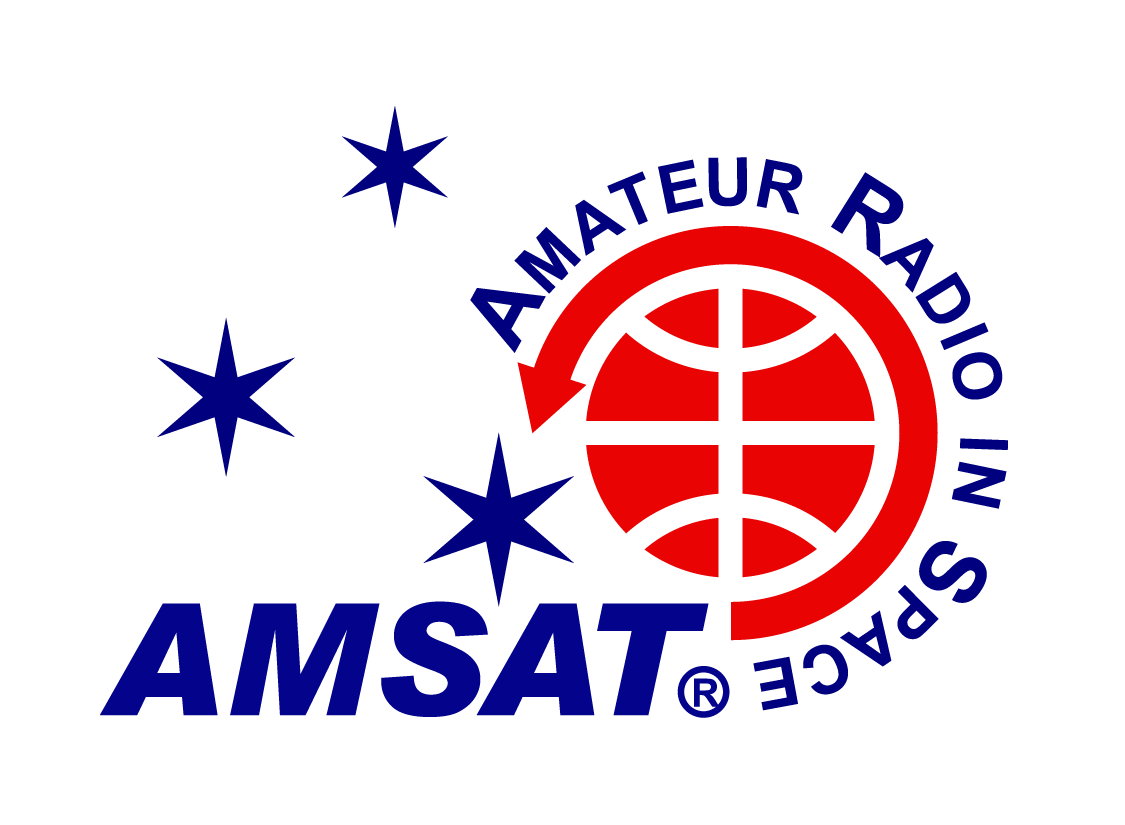

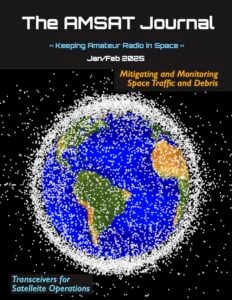
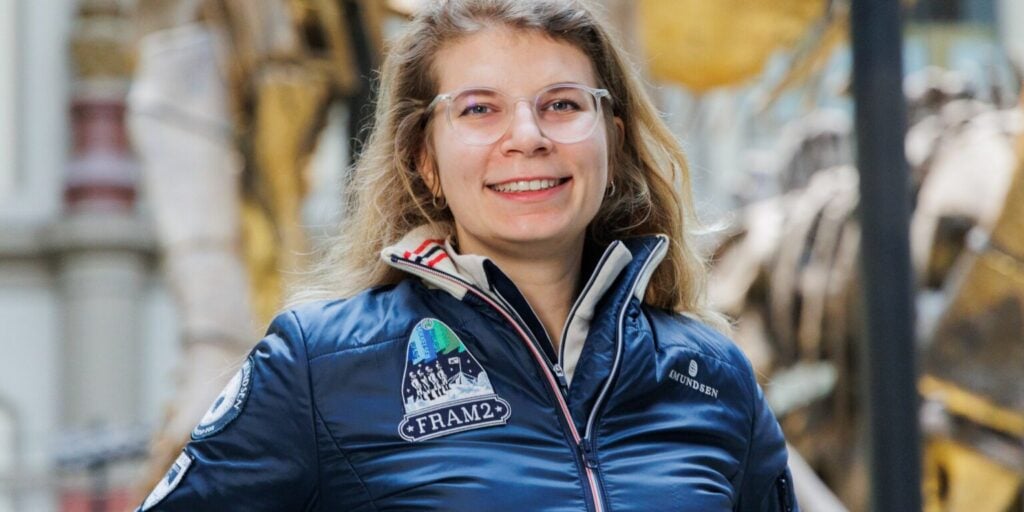
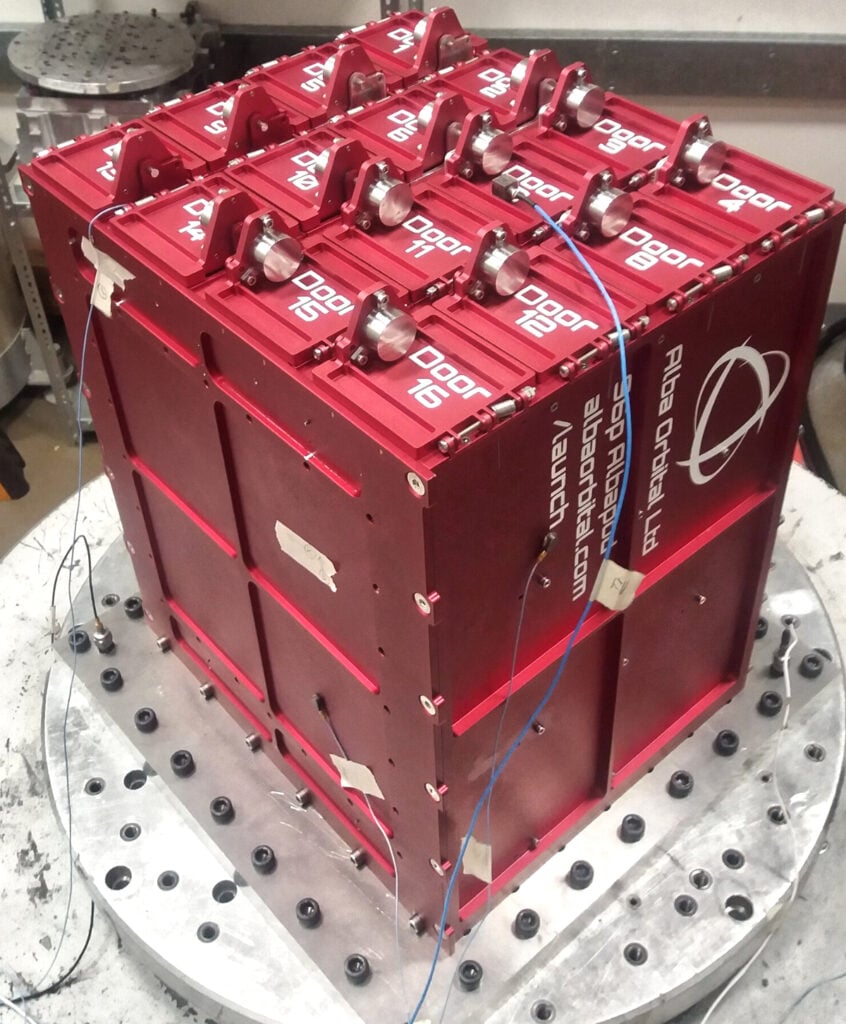
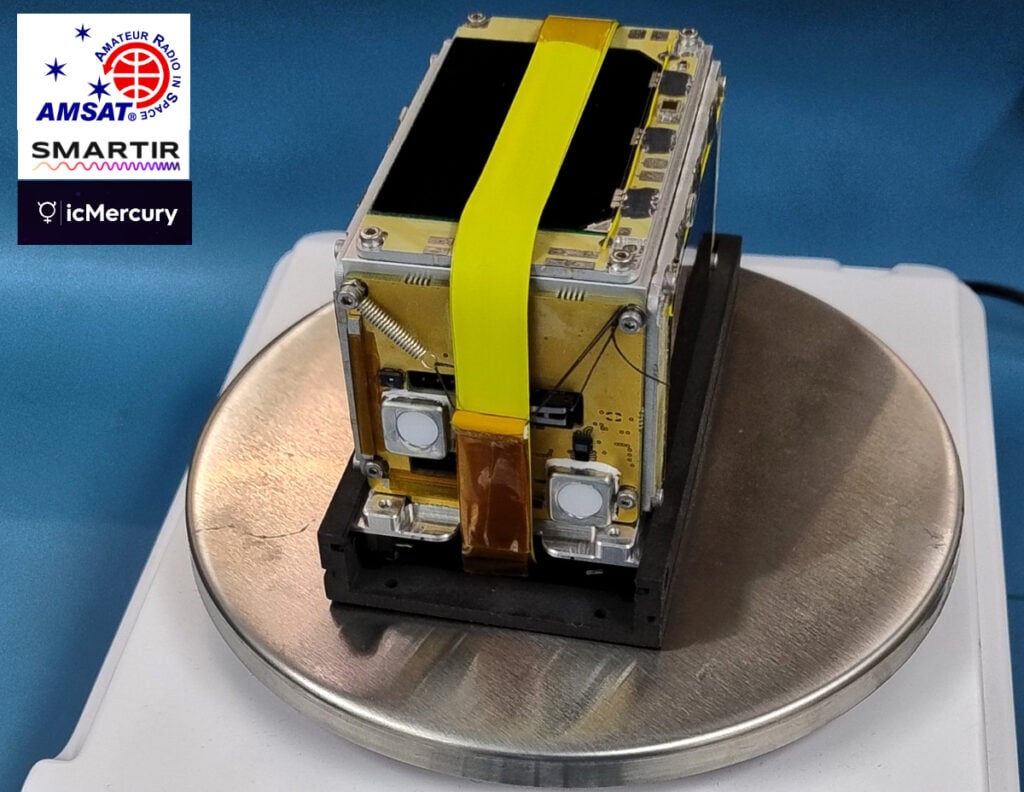
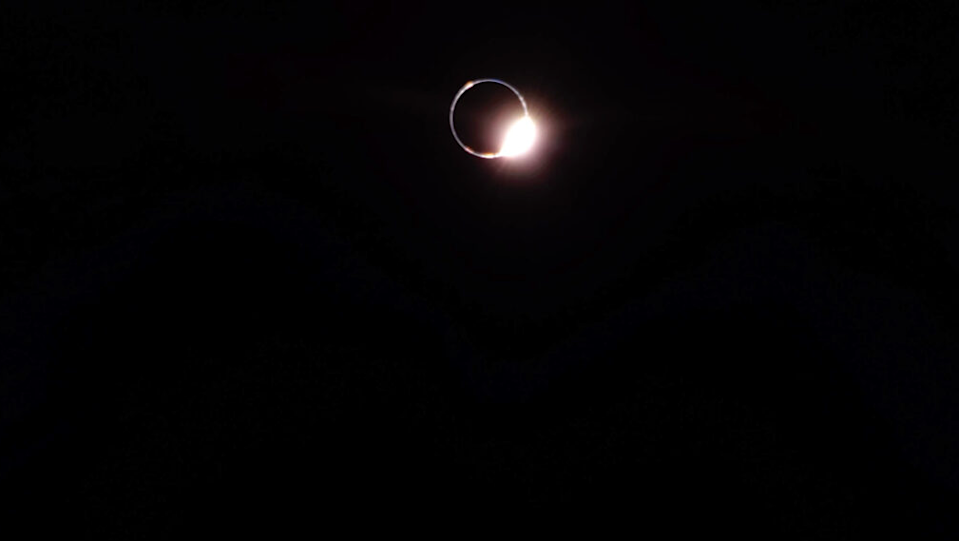
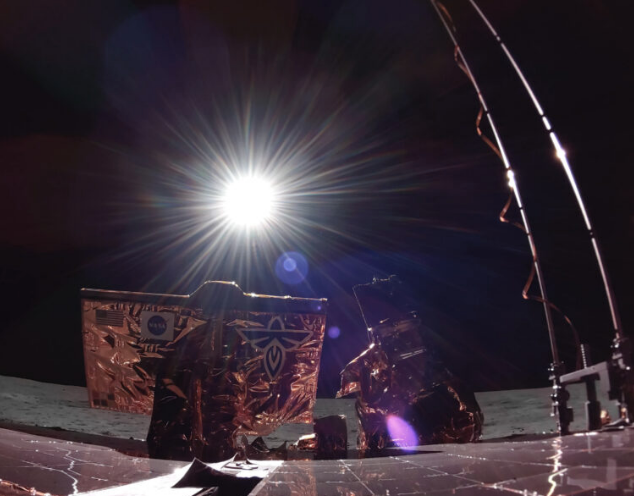
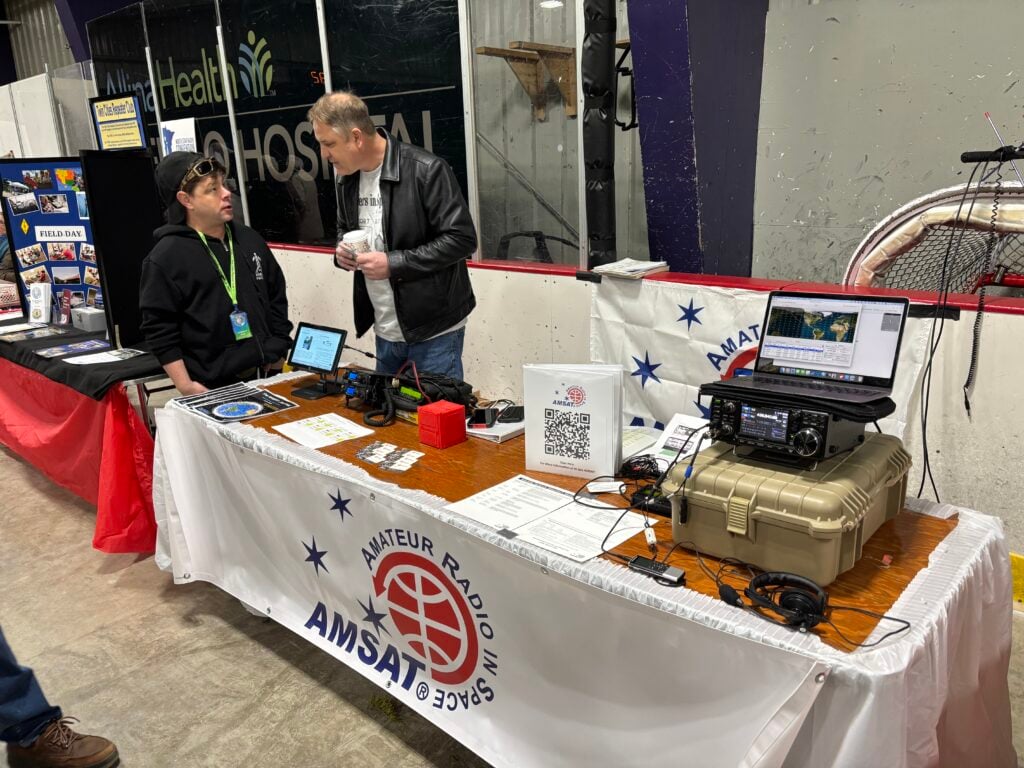
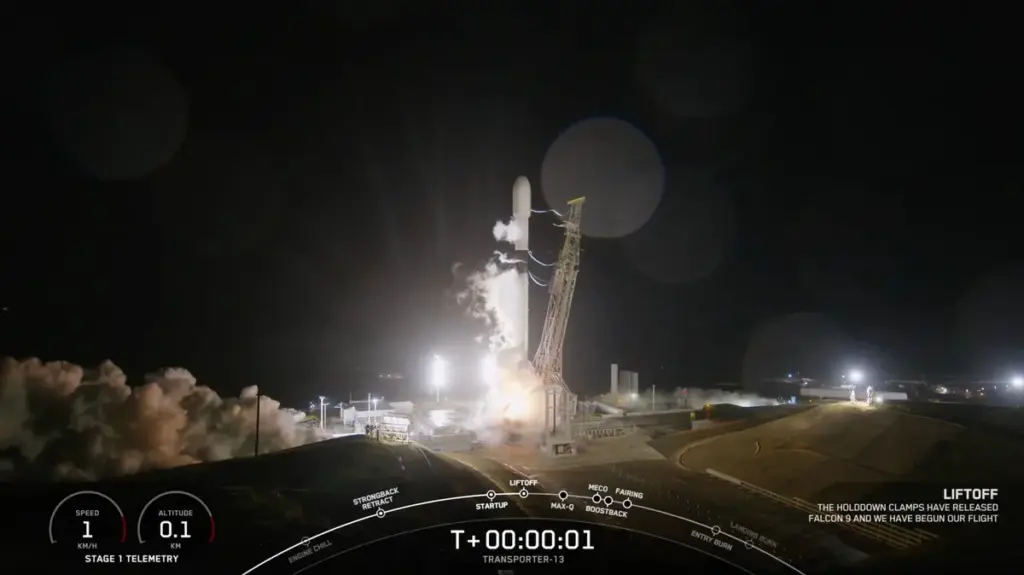
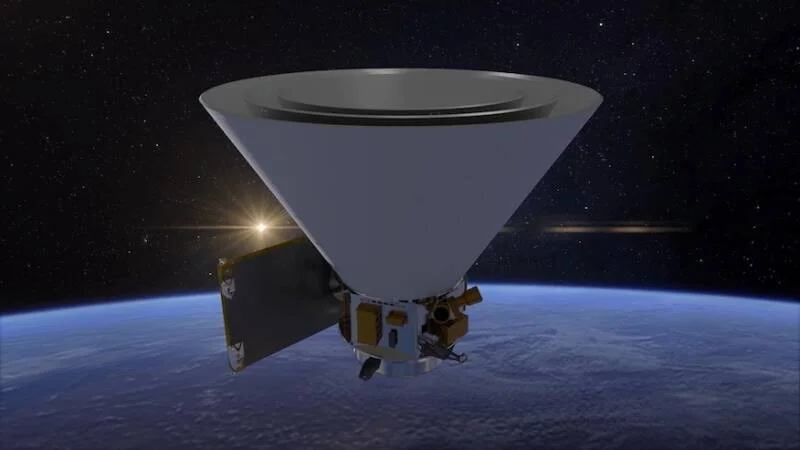
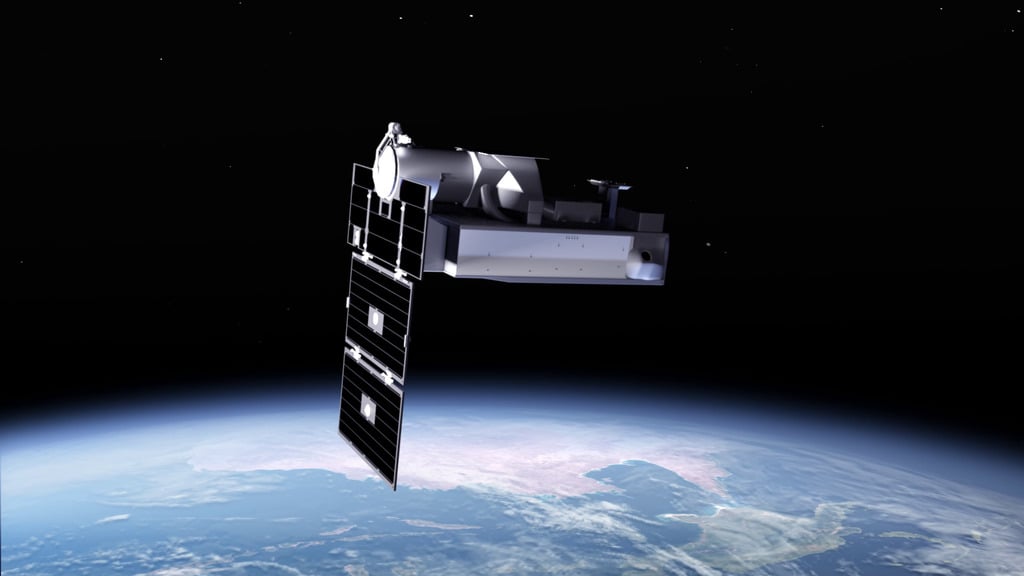

 Amateurs and others around the world may listen in on contacts between amateurs operating in schools and allowing students to interact with astronauts and cosmonauts aboard the International Space Station. The downlink frequency on which to listen is 145.800 MHz worldwide.
Amateurs and others around the world may listen in on contacts between amateurs operating in schools and allowing students to interact with astronauts and cosmonauts aboard the International Space Station. The downlink frequency on which to listen is 145.800 MHz worldwide.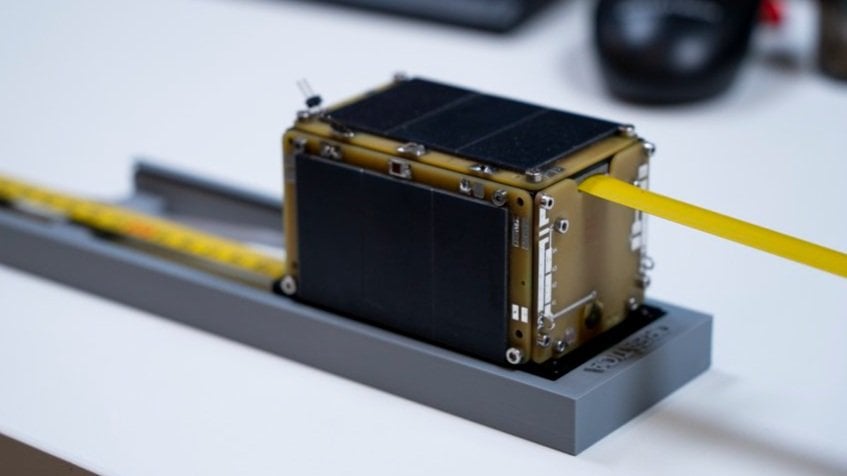
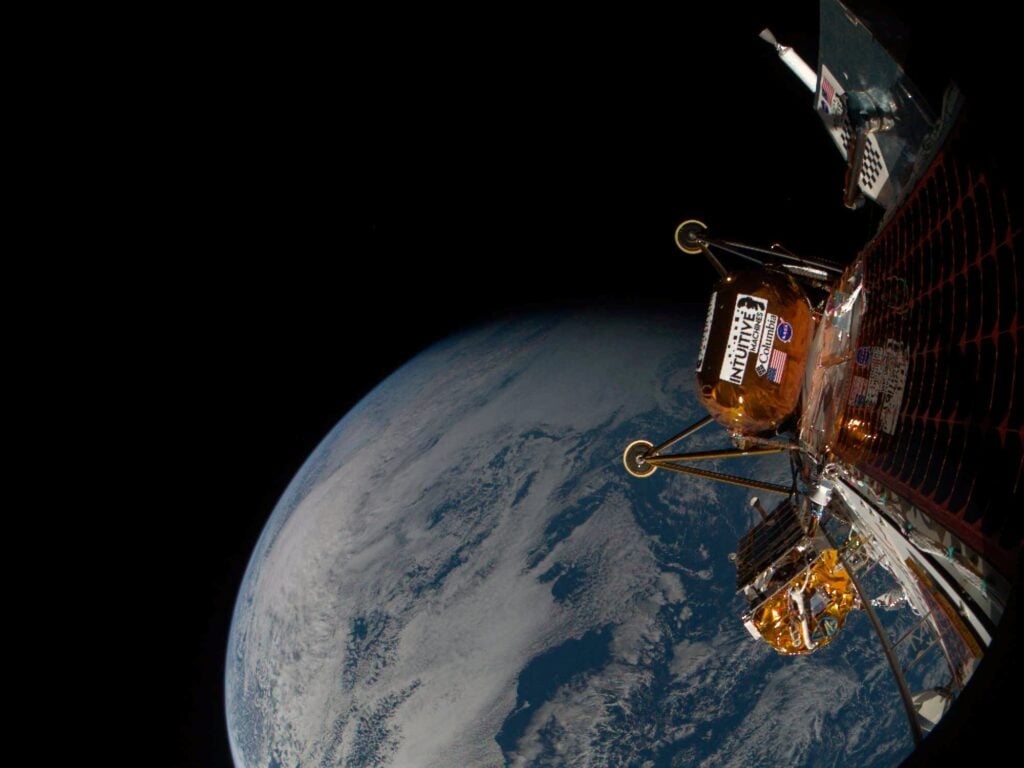
 The crossband repeater continues to be active (145.990 MHz up {PL 67} & 437.800 MHz down). If any crewmember is so inclined, all they have to do is pick up the microphone, raise the volume up, and talk on the crossband repeater. So give a listen, you just never know.
The crossband repeater continues to be active (145.990 MHz up {PL 67} & 437.800 MHz down). If any crewmember is so inclined, all they have to do is pick up the microphone, raise the volume up, and talk on the crossband repeater. So give a listen, you just never know.